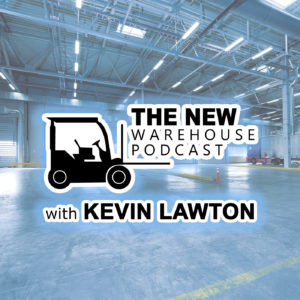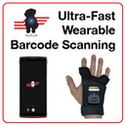Episode 324: Smart Warehousing and Big Data
Episode 324: Smart Warehousing and Big Data

Welcome to the New Warehouse podcast. If you are curious about big data in warehousing, this is the episode for you. Today, we’re excited to have Learie Hercules, aka “Herc” and CTO at Smart Warehousing, on the show. Smart Warehousing is a company that leverages big data infrastructure and machine learning to optimize the movement of products from A to B across its thirty-eight warehouses. Kevin and Herc discuss how cloud-based data storage and big data drive innovation in the warehousing space.
Key Takeaways
- Herc explains what differentiates Smart Warehousing is its ability to service both direct to consumers and retailers. He adds that this also provides insight into what technologies retailers are introducing and how they approach the market. These insights help to inform Smart Warehousing as they build out their technology stack – giving them a competitive advantage. Since they have virtualized their capacity across their network and utilize demand forecasting models, they can place products closer to the consumer, which helps achieve cheaper price points.
- Kevin and Herc discuss the old-school mentality often found in warehousing and how that is shifting to a more technology-driven mindset. Startups, in particular, have been active in the warehousing space to solve many of the challenges in warehousing and capitalize on opportunities. Herc believes micro-fulfillment mobility will be the next big thing from a technology standpoint in material handling and warehousing. He also teases several exciting announcements from Smart Warehousing in the coming months.
- Herc believes Smart Warehousing’s distributive model saves companies a lot of money while decreasing their inventory footprint. He adds how retailers are navigating away from the traditional centralized distribution model because of the potential points of failure. Smart Warehousing distributes products based on zones, so if there is a disruption in one area, they can fulfill products from another location without impacting the customer. He believes this allows them to move products more efficiently and become a more resilient supply chain.
- Like Amazon, Smart Warehousing does the forecasting regarding where the inventory needs to be. When on-boarding new customers, Smart Warehousing reviews the previous thirteen months of order history and runs its forecasting models. From there, the customer brings in their product, and Smart Warehousing takes care of the rest.
- They also discuss how AI and machine learning are changing the game for predicting demand, inventory, and safety stock levels to optimize orders. Herc explains how their architecture records every event in a warehouse, enabling them to fine-tune their algorithms continually. He adds how this is creating a whole new revenue model as they can create visibility platforms with their capability to ingest data from any source at high speed and process it in sub-seconds. We continue to see more robotics, AI, and machine learning applications in warehousing, and the labor challenges only drive up the demand.
Listen to the episode below and leave your thoughts in the comments.
For more information on Smart Warehousing, click here.
To connect with Learie on LinkedIn, click here.
For more information about warehouse storage solutions, check out the podcasts below.
Episode 317: Hannibal at MODEX 2022 » The New Warehouse





Episode 327: Siena Analytics at MODEX 2022 » The New Warehouse
[…] Episode 324: Smart Warehousing and Big Data » The New Warehouse […]
Episode 342: Product Labeling with Loftware » The New Warehouse
[…] Episode 324: Smart Warehousing and Big Data » The New Warehouse […]
378: The Smart Warehouse with Softeon » The New Warehouse
[…] Smart Warehousing and Big Data […]